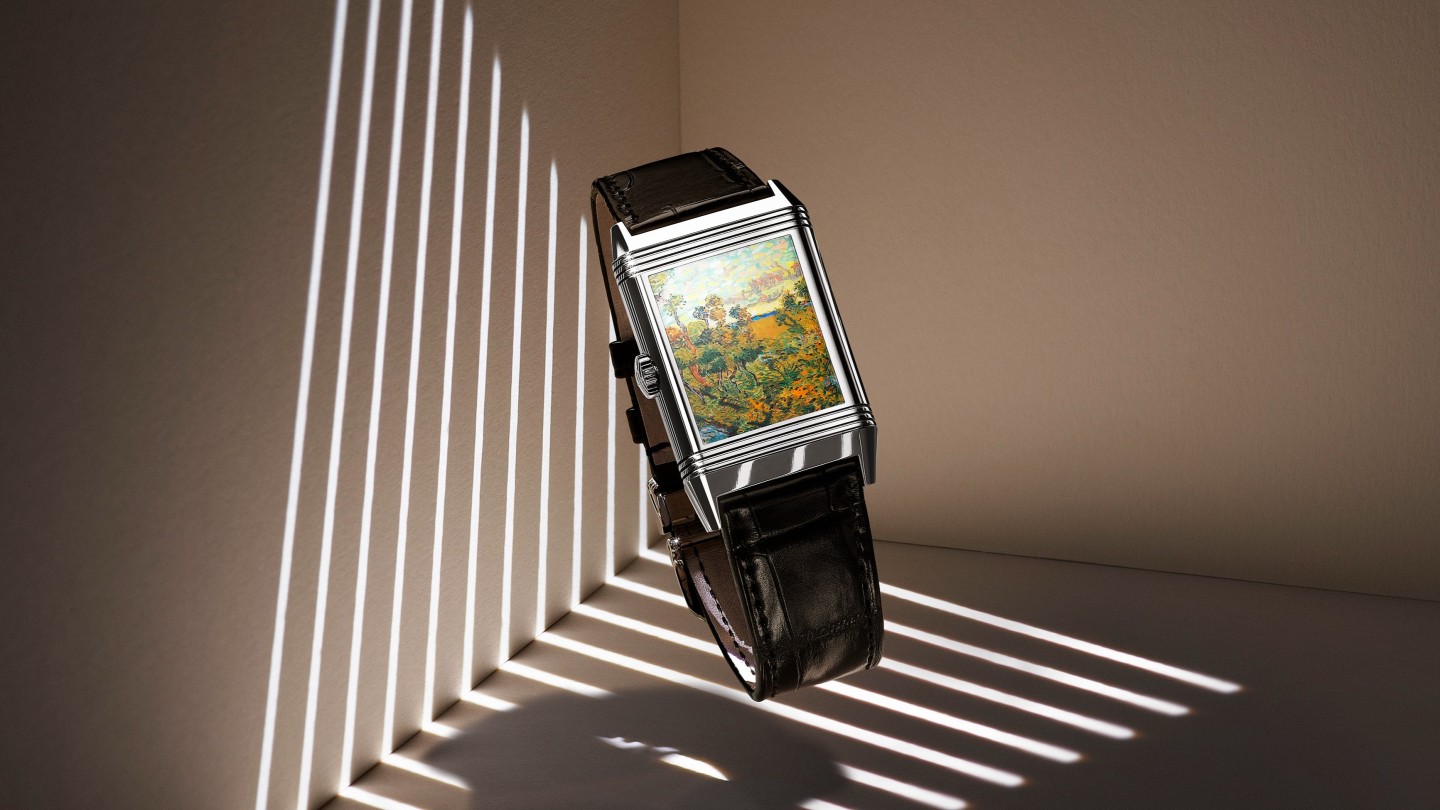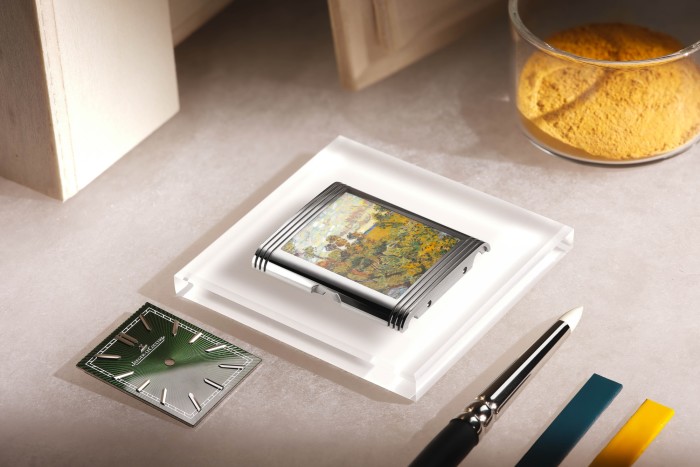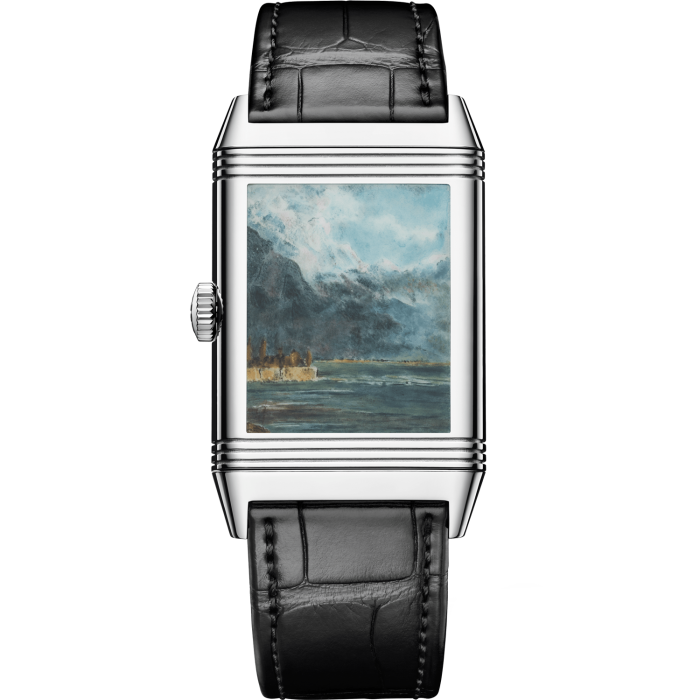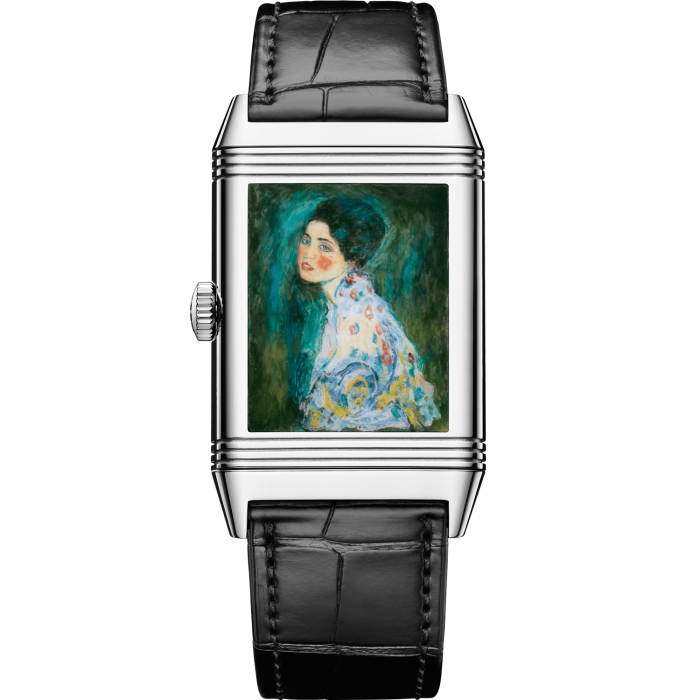Paintings by Courbet, Van Gogh and Klimt get the full Reverso treatment

Roula Khalaf, Editor of the FT, selects her favourite stories in this weekly newsletter.
There’s no letting up in Jaeger-LeCoultre’s 90th-anniversary celebrations for its Reverso watch. The art deco-style timepiece, born in 1931, is arguably the world’s first dedicated sports watch, with a case that can be flipped over to protect its face from smashing during games of polo. Over the years the aesthetic of the “reverse” side has become at least as important as the main face itself, and at an exhibition in Paris opening on 21 October, Jaeger-LeCoultre launches its Reverso Tribute Enamel Hidden Treasures, the climax of a year of horological highlights. Three new watches, each in a limited edition of 10 (€90,000), have been painted on their hidden side by the brand’s in-house team with major artists’ works that were long believed to have been lost or stolen.

There’s Gustave Courbet’s View of Lake Léman (1876), which lay unrecognised for 70 years after it was moved to a storage locker at the end of the second world war. Then there’s Van Gogh’s Sunset at Montmajour (1888), dismissed as a fake after the Norwegian industrialist Christian Nicolai Mustad bought it in 1908, leading him to banish it to his attic. It was finally authenticated in 2013, making it the first full-sized painting by the artist to be given the green “it’s genuine” light since 1928.


And, finally, there is Gustav Klimt’s Portrait of a Lady (1917). It is, in fact, a double portrait, with Klimt covering over the original subject of the work – a woman with whom he had fallen deeply in love, but who died young – with a painting of another woman in the last year of his life. The picture went on to be stolen from a Piacenza gallery in 1997 before being found 22 years later in a black rubbish bag in the gardens of the same gallery. It turned out to have been an inside job, but the painting was in too good a condition to have been sitting outside for two decades. Who exactly returned it, when and why? Case unsolved.
Reverso: Timeless Stories Since 1931 is open Tuesday to Saturday, 21 October to 24 December, 15 Rue du Faubourg Saint-Honoré, Paris (exposition-reverso.com)
Comments